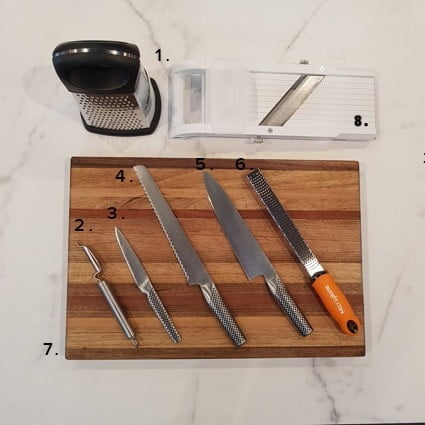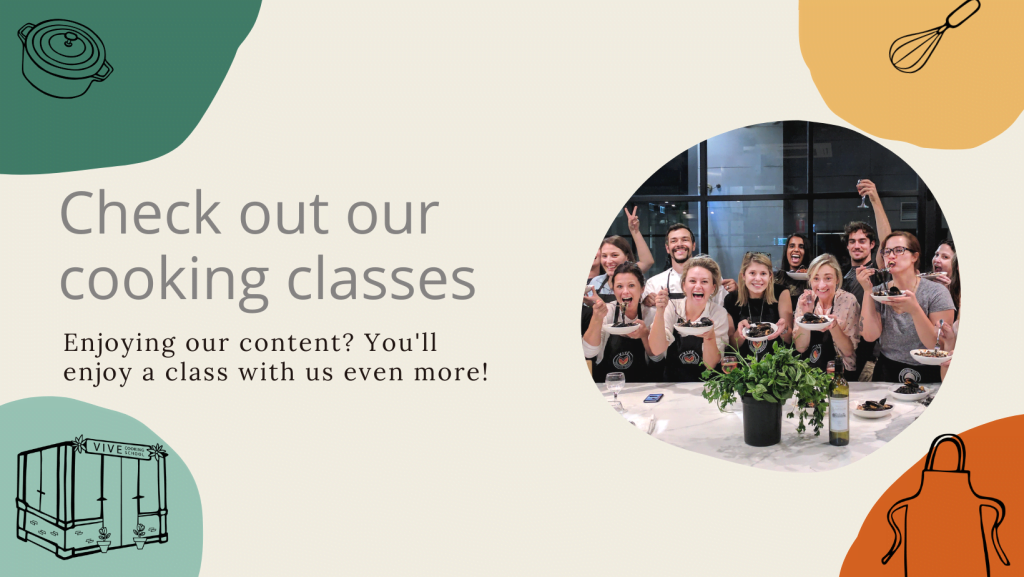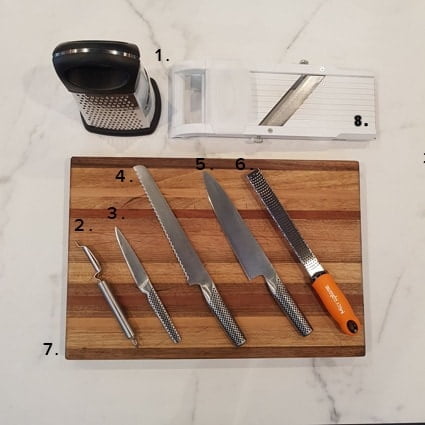
This series is about all the essential cooking tools in the kitchen created with the intention to help you to be more efficient in the kitchen. We have posted two blog posts, one about baking/pastry tools and the second was about cooking tools. This time we will talk about the essential utensil used for cutting for every cook at home.
1. Grater: a manual multi-purpose kitchen helper that offers ease in food preparation. This useful tool helps you save time and attain an even ingredients processing result. Works well with potatoes for hash browns, cabbage for coleslaw, hard and soft cheeses, carrots, and many other solid vegetables. Please use this grater with caution, and not cut yourself.
2. Vegetable Peeler: makes removing the outer skin or covering off vegetables like carrots and turnips quick and convenient. The knife can do the job too, but vegetable peeler involves a process that is safer and more precise if you use them the right way. They can also be used for everything from peeling the tough outer membrane of celery stalks to shaving slices of hard cheese.
3. Paring Knife: it’s precise, delicate and looks like a miniature chef’s knife but its use is very different. The paring knife is great for peeling fruits and vegetables; slicing a single garlic clove or shallot; controlled, detailed cutting, such as cutting shapes or vents into dough; and scoring designs and patterns on surfaces of food. Use it for any job that requires precise and delicate work. According to our Chefs, you only really need 3 knives in your kitchen and this is one of them. At VIVE, we use Global Knives because the quality is outstanding and the steel handle provides a good grip and allows greater control over the knives. Tips from our chefs: Please make sure to use a sharp knife, this is safer for you. Also NEVER leave your knives in the sink this is dangerous and it’s one of the most common reason why people injure themselves in the kitchen. Finally, don’t put your knives in the dishwasher, always clean it by hand.
4. Serrated Knife: with it scalloped, tooth-like edge, it’s ideal for cutting through foods with a hard exterior and softer interior, such as a loaf of crusty bread. The principle behind a serrated knife is similar to that of a saw: The teeth of the blade catch and then rip as the knife smoothly slides through the food. It cuts cleanly through the resistant skin and juicy flesh of a ripe tomato without crushing it. Crusty bread is easier and neater to cut using a serrated knife because the crust will splinter less. According to our chefs, you only really need 3 knives in your kitchen and this is one of them. At VIVE, we use Global knives because the quality is outstanding and the steel handle provide a good grip and allow greater control over the knives.
5. Chef’s knife: as one of our chefs likes to say: “a chef’s knife is like a dance partner”. It’s the single most important tool in any kitchen and is used in the creation of virtually every dish. It offers more control and less slippage when you cut, leading to safer, more consistent slices. According to our chefs, you only really need 3 knives in your kitchen and this is one of them. At VIVE, we use Global knives because the quality is outstanding and the steel handle provide a good grip and a allow greater control over the knives. Tips from our chefs: Please make sure to use a sharp knife, this is safer for you. Also NEVER leave your knives in the sink this is dangerous and it’s one of the most common reason why people injure themselves in the kitchen. Finally, don’t put your knives in the dishwasher, always clean it by hand.
6. Microplane/ Zester: when you need to zest a lemon, shave dark chocolate, or grate a cinnamon stick to sprinkle over ice cream, all you need is a compact, simple kitchen tool: a microplane zester. There are several different kinds of it, depending on their use: coarse ones for grating cheese, fine ones for spices. The best brand out there is Microplane itself according to our chefs. Please be mindful to handle this tool with extra care.
7. Cutting Board: Wood or plastic? Wood is our preferred type, as it’s kind to knives and won’t pull them as quickly as plastic. Care for it by oiling it regularly with a food-safe oil to protect it from staining and warping, and it’ll last you for years. If you are based in Australia, we certainly recommend “The Big Chop” they produce quality wooden chopping boards and we’ve been using them since day 1. Plastic ones are not our favourite if we must be honest because residual of plastic can end up in your ingredients.
8. Mandoline: will help you slice even pieces of vegetable that would take a long time to achieve with a knife. It is one of our chef’s favourite tools, but it is also one you have to be the most careful with. The blades are so sharp and accidents with a mandoline are unfortunately common and quite nasty. An easy way to avoid getting cut is to use a guard. Most chefs will tell you that the guard won’t last days in the kitchen… It ends up lost or in the bin. This is probably why chefs injure themselves a lot with a Mandoline.
There we go! The essential cooking tools that our chefs use to be efficient in the kitchen. But wouldn’t it be even better if you can try them out in our cooking class? Our cooking classes are designed to be fun, interactive and hands-on. You will learn how to make a delicious meal from scratch and get familiar with the very same cooking tools and utensils that we talked about in this blog.
Here are a few of our top rated cooking classes:


